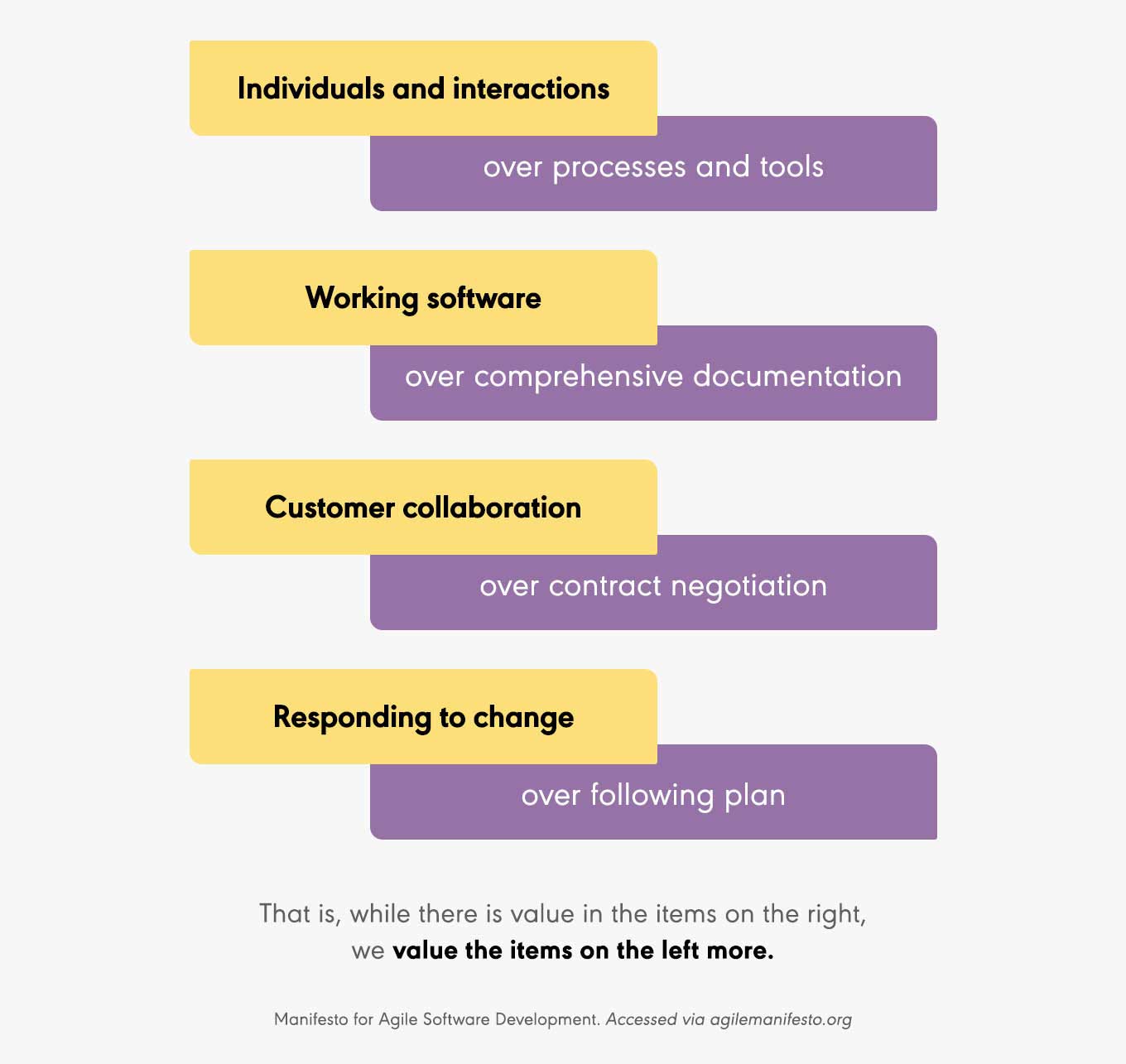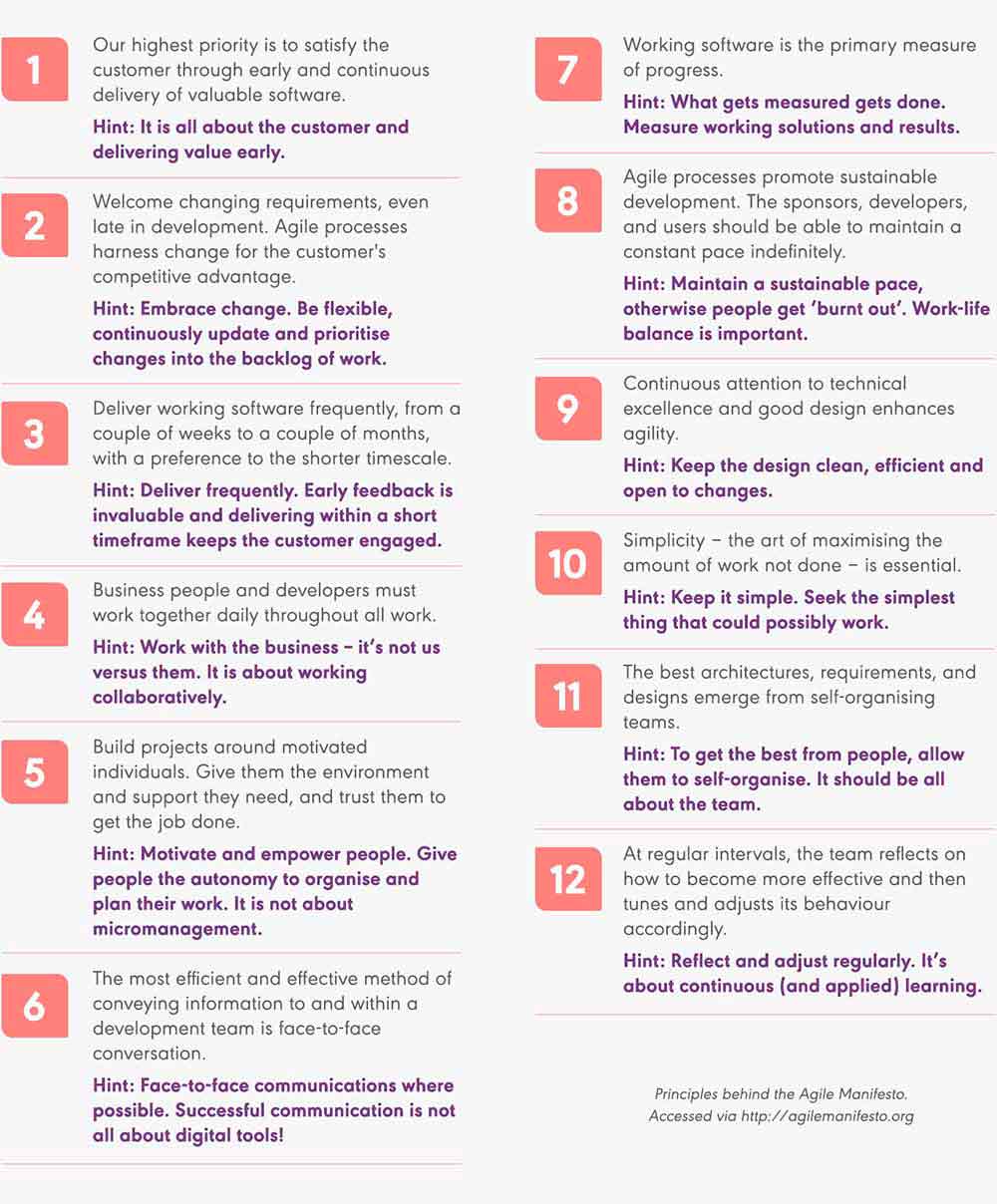The Agile Journey: Understanding agile values and principles

Google the word ‘agile’ and you’ll end up with more than 141 million results. Agile is a very broad umbrella term, which can be viewed in many ways. It’s no wonder then that there is confusion around what agile actually is and how to implement it effectively. The Agile Journey series aims to set things straight, starting with a back to basics look at the agile values and principles that lie at the heart of this approach.
While agile work practices and delivery methods are becoming more widespread, even those who think they’re ‘doing agile’ may not be applying agile processes in the most effective ways. In many cases, they’re attempting to run before they can walk.
In order to ‘do agile’ you first need to ‘be agile’. This involves adopting a new way of thinking or mindset that is based on the values and principles of The Agile Manifesto.
In this first instalment of The Agile journey we go back to basics and take a close look at what these agile values and principles are, and – just as importantly – how you can interpret them in your organisation.
The Agile Manifesto
The Agile Manifesto was created in 2001 by a group of 17 software practitioners who subsequently named themselves ‘The Agile Alliance’. This group was made up of representatives from a range of disciplines who all recognised the need for an alternative to documentation driven, heavyweight software development processes.
The Manifesto includes a statement of four values and twelve guiding principles.

As the Agile Manifesto was created by software experts, it includes terms from the software domain to express its ideas. These ideas are, however, applicable to any kind of knowledge project work. Just look beyond the terms and consider how these concepts can apply to other types of work. For example, working software could be replaced with working solutions or product.
Interpreting the four values
The Manifesto isn’t a set of rules saying that you must do this (A) instead of something else (B). The values reflect intention, focus and emphasis required. It is not about A (e.g. responding to change) replacing B (following a plan), but acknowledging that both are components to be addressed, with focus and emphasis on A rather than B.
Consider these values in a practical project sense:
- Individuals and interactions over processes and tools. Projects are about people – people solve problems, people determine scope, people decide the definition of a successful project. People should be the focus in terms of time, energy and passion.
- Working software over comprehensive documentation. The focus here is on delivering the solution, product or service; this should be the essence for any project. Documentation is still important, but the intent should be ‘just enough documentation, just in time’. Remember, documentation by itself at the expense of a working solution is not the answer.
- Customer collaboration over contract negotiation. We need to be flexible and accommodating with the customer/end user rather than be fixed and uncooperative. This requires a trusting relationship and often more flexible contract arrangements.
- Responding to change over following a plan. Acknowledge things can and will change. We still need to plan but recognise that initial plans were created when little was known about the project, and plans will need to be refined as work progresses.
Principles behind the Agile Manifesto
To help teams ‘live the values’, the Agile Manifesto is supported by 12 principles that should be adhered to:

The Agile Manifesto is simple in overall format and structure, yet there is a lot of wisdom and pragmatism in its values and principles.
In our next piece in The Agile Journey series we share some essential tips to consider when embracing an agile mindset across your organisation.
Looking for more agile insights, or wondering how to turn your career goals into reality? Visit our Agile Learning Pathway today.






